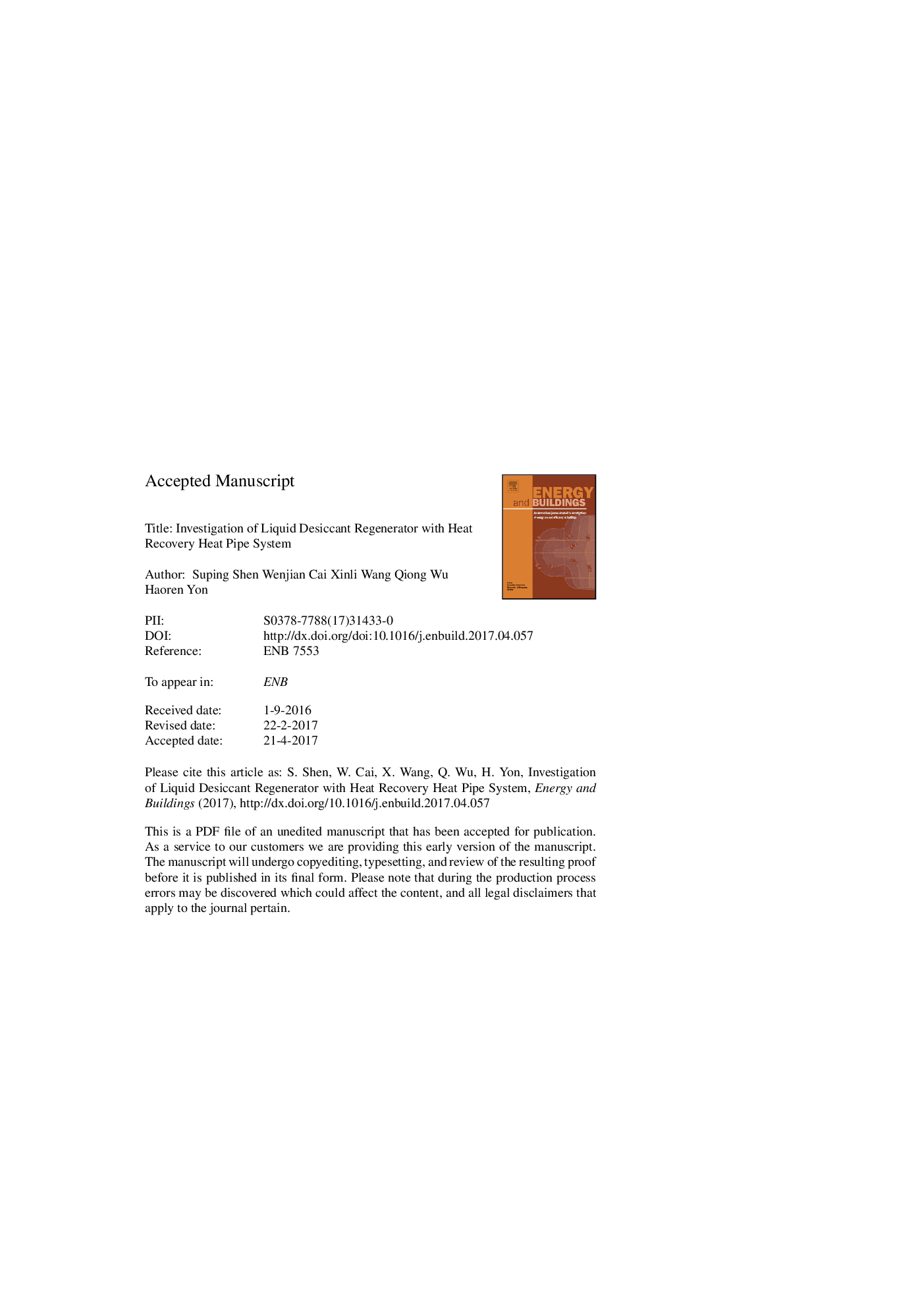| Article ID | Journal | Published Year | Pages | File Type |
|---|---|---|---|---|
| 4919235 | Energy and Buildings | 2017 | 30 Pages |
Abstract
To evaluate and compare the regenerator of liquid desiccant dehumidification system (LDDS) without and with heat pipe heat exchanger (HPHE), this paper conducts performance analysis by hybrid heat transfer, mass transfer and heat recovery models, and the simulation results are then validated by the experimental results. 4 and 8 rows HPHE are compared to investigate the relationship between heat recovery rate and the additional fan energy consumption caused by the existence of HPHE. Effects of air mass flow rate on the regenerating and heat recovery performance are also discussed. The results show that the numerical computation is effective and accurate and the largest RE is only 10.87%. With heat recovery device, the regenerating performance is in general improved. The model predicted results reveal that the maximal net heat recovery ratios are 25% and 26.5% which contributes to 26.5% and 27% maximal energy saving for 4 and 8 rows, respectively, compared with regenerator without HPHE.
Keywords
Related Topics
Physical Sciences and Engineering
Energy
Renewable Energy, Sustainability and the Environment
Authors
Suping Shen, Wenjian Cai, Xinli Wang, Qiong Wu, Haoren Yon,
